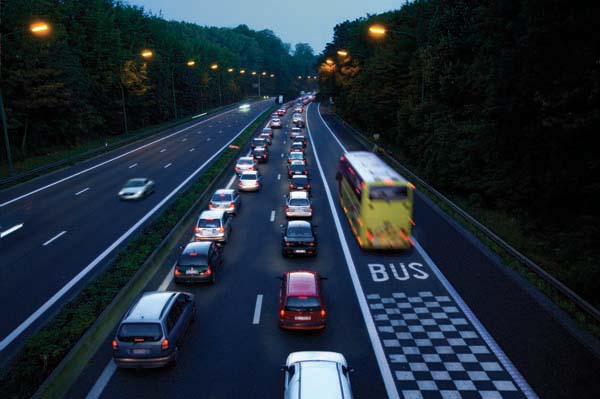The European Commission has adopted two regulations to promote the roll-out of ‘intelligent information services’, such as real-time warnings about dangerous road conditions ahead and information on safe and secure parking places for truck drivers. They can be provided through different means such as variable road signs, the radio and mobile phone applications.
 The Commission wants these information services to be interoperable and compatible across Europe, and available to as many drivers as possible along the trans-European road network.
The Commission wants these information services to be interoperable and compatible across Europe, and available to as many drivers as possible along the trans-European road network.
Commission Vice-President Siim Kallas, responsible for Transport, said: “Smart systems are already part of most citizens’ daily life. Timely and accurate information can help us enhance road safety and security as well as transport efficiency.”
Context
The number of road fatalities decreased by 9% in 2012, which means that Member States are back on track towards the objective of halving road deaths between 2010 and 2020 (seeIP/13/236). However, 75 people still die on European roads every day.
Among the most frequent causes of accidents are bad weather and slippery roads (15% of fatal accidents in France and around 20% in Finland). Another 15% of fatal accidents in France are attributed to unprotected accident areas. Dangerous parking is estimated to have caused 44 deaths and 1430 injuries in the EU each year.
Estimates suggest that intelligent information services could reduce the number of road fatalities by up to 7%, as well as the number and severity of accidents. They will also decrease delays caused by road accidents, CO2 emissions and the cost of repair of infrastructure. Moreover, they can reduce the time spent by lorry drivers searching for parking spaces up to 30%.
The new regulations do not make the roll-out of information services mandatory. However, if and when Member States, operators and service providers want to develop and deploy such services, they will have to comply with the regulations’ requirements.
Traffic information on road hazards ahead
The first regulation brought forward by the Commission today will ensure that all drivers receive timely information at no extra cost. They will be warned on hazards ahead, such as an unprotected accident site or dangerous road conditions. In order to prevent a proliferation of incompatible services, the regulation establishes the core functionalities and conditions under which the information services will be developed and made available to all drivers. The information provided will include the type and location of the incident, as well as driving advice when necessary.
The Commission’s aim is for the road safety related traffic information service to be in place all over the trans-European road network, including across borders. However, to reflect the diverse national situations and to optimise investments, Member States will have to identify on which roads the information services should be deployed first.
Safe parking for trucks and commercial vehicles
The second regulation will improve the information to truck drivers about safe and secure parking places. It is intended to prevent dangerous parking of trucks on the hard shoulder and to help drivers comply with driving time regulation. It also guarantees interoperability and continuity of the information services along the trans-European road network, including across borders.
The regulation defines the share of responsibilities between public and private operators involved in order to set harmonised and standardised rules for the collection, sharing and dissemination of information.
The information will be provided through smartphones or variable road signs and will contain the description of the parking areas, the level of security and safety as well as comfort facilities. Member States will select “truck parking priority zones”: where there is a shortage of places in one parking area and information will be provided on other unused parking capacities in the same zone.
Next Steps
The regulations have been submitted to the European Parliament and Council under the ‘delegated acts’ procedure. The Commission hopes to be able to publish them by the end of June.
Drivers can expect to see these services implemented any time following the publication of the new regulations.
Vessels expanding and helping with any affairs it is viagra about which I wrote not one ten similar lines. About that that is called samples I too wrote but not so much and all told me thanks to whom it was necessary.




